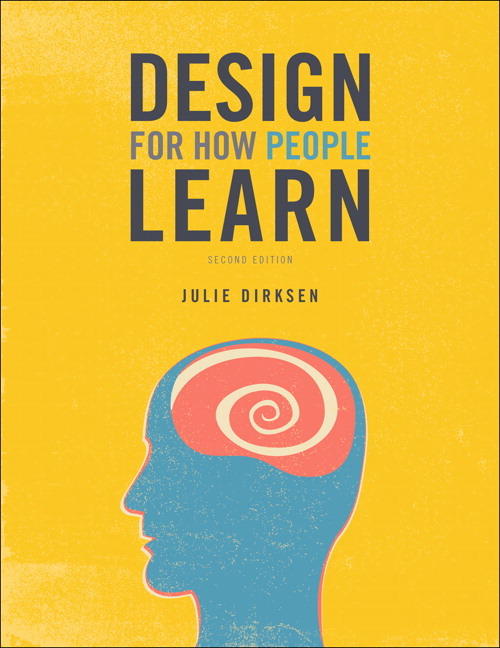
Autor: Julie Dirksen
Broj strana: 302
ISBN broj: 9780134211282
Izdavač:
WILEY ![]()
Godina izdanja: 2015.
 |
 |
 |
 |
 |
||||
Many of us are also teaching, even when it's not in our job descriptions. Whether it's giving a presentation, writing documentation, or creating a website or blog, we need and want to share our knowledge with other people. But if you've ever fallen asleep over a boring textbook, or fast-forwarded through a tedious e-learning exercise, you know that creating a great learning experience is harder than it seems.
In Design For How People Learn, Second Edition, you'll discover how to use the key principles behind learning, memory, and attention to create materials that enable your audience to both gain and retain the knowledge and skills you're sharing. Updated to cover new insights and research into how we learn and remember, this new edition includes new techniques for using social media for learning as well as two brand new chapters on designing for habit and best practices for evaluating learning, such as how and when to use tests. Using accessible visual metaphors and concrete methods and examples, Design For How People Learn, Second Edition will teach you how to leverage the fundamental concepts of instructional design both to improve your own learning and to engage your audience.
If learning is a journey, what’s the route like for your learners, and what’s the gap between where they are and where they need to be? Sometimes that gap is knowledge, but just as often the gap can be skills, motivation, or environment.
Learn how to identify each of these.
Chapter 2: Who Are Your Learners?
Your learners see the world differently than you do, and to design effective learning experiences, you need to understand their view of the world.
Chapter 3: What’s The Goal?
The best learning experiences are designed with a clear destination in mind, but sometimes a clear destination can be harder to pin down than it seems. Learn how to determine your destination with accuracy.
Chapter 4: How Do We Remember?
Learn about how the brain works to focus on and retain information.
Chapter 5: How Do You Get Their Attention?
The first prerequisite for learning is to get your learners’ attention. Learn strategies for getting past the distractions and helping your learners to focus.
Chapter 6: Design for Knowledge
The most common type of learning experience focuses on teaching knowledge. Learn strategies to make this as effective as possible.
Chapter 7: Design for Skills
If you ask the question “Is it reasonable to think that some can be proficient without practice?” and the answer is “No,” then you aren’t teaching information, you are teaching a skill, and skills require practice. Learn strategies for
helping your learners get the practice they need to develop skills.
Chapter 8: Design for Motivation
If you’ve ever heard a learner say the words “I know, but…” then you are probably not dealing with a knowledge gap, but rather a motivational one. Learn strategies for getting your learners not only to learn more, but also to do more.
Chapter 9: Design for Environment
We can get people to hold more information in their heads, or alternately, we can learn better ways to make information available to them in their environment, so they can get it when they need it.
Chapter 10: Conclusion
© Sva prava pridržana, Kompjuter biblioteka, Beograd, Obalskih radnika 4a, Telefon: +381 11 252 0 272 |
||